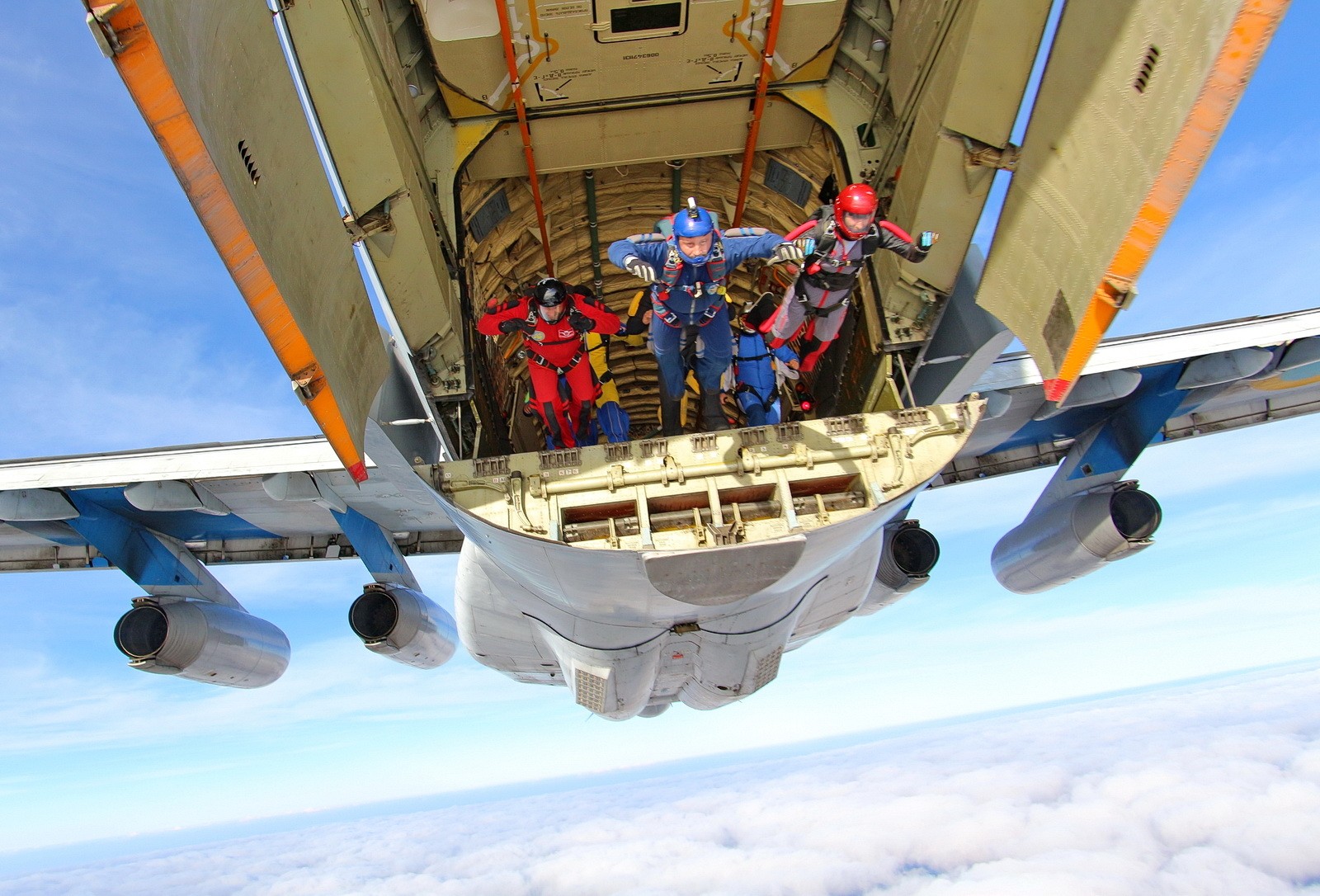|
Main Assisted Reserve Deployment (MARD)
A main assisted reserve deployment (MARD) system is a skydiving safety device for parachute systems. While there are many variations, the operation and intended outcome for each is the same: open the reserve parachute container and extract the reserve parachute's deployment bag (and parachute) using the jettisoned main canopy. A MARD builds upon how a reserve static line (RSL) safety device works and in most circumstances, MARDs incorporate an RSL. Parachute deployment To understand what and how a MARD works, it is important to describe deployment systems and how a MARD is built upon these. In modern, common sport parachute systems, there are two parachutes: a main and a reserve. There are three types of intended parachute deployments: main only, reserve only, and main deployment and jettison followed by the reserve. A reserve deployment followed by a main deployment is a fourth and not intended deployment sequence. MARDs and RSLs operate with the reserve deployment, and theref ... [...More Info...] [...Related Items...] OR: [Wikipedia] [Google] [Baidu] |
Skydiving
Parachuting and skydiving are methods of descending from a high point in an atmosphere to the ground or ocean surface with the aid of gravity, involving the control of speed during the descent using a parachute or multiple parachutes. For human skydiving, there is often a phase of free fall (the skydiving segment), where the parachute has not yet been deployed and the body gradually accelerates to terminal velocity. In cargo parachuting, the parachute descent may begin immediately, such as a parachute-airdrop in the Troposphere, lower atmosphere of Earth, or it may be significantly delayed. For example, in a planetary atmosphere, where an object is descending "under parachute" following atmospheric entry from outer space, space, may occur only after the hypersonic entry phase and initial deceleration that occurs due to aerodynamic drag, friction with the thin upper atmosphere. History The first parachute jump in history was made on 22 October 1797 by Frenchman André-Jacq ... [...More Info...] [...Related Items...] OR: [Wikipedia] [Google] [Baidu] |
Parachute
A parachute is a device designed to slow an object's descent through an atmosphere by creating Drag (physics), drag or aerodynamic Lift (force), lift. It is primarily used to safely support people exiting aircraft at height, but also serves various purposes like slowing cargo, aiding in space capsule recovery, and stabilizing vehicles or objects. Modern parachutes are typically made from durable fabrics like nylon and come in various shapes, such as dome-shaped, rectangular, and inverted domes, depending on their specific function. The concept of the parachute dates back to ancient attempts at flight. In 852 AD, Armen Firman, in Córdoba, Spain, made the first recorded jump with a large cloak to slow his fall. Renaissance figures like Francesco di Giorgio Martini and Leonardo da Vinci later sketched designs resembling modern parachutes, but it wasn’t until the 18th century that the first successful jumps occurred. French Louis-Sébastien Lenormand made the first public jump i ... [...More Info...] [...Related Items...] OR: [Wikipedia] [Google] [Baidu] |
Reserve Parachute
Parachuting and skydiving are methods of descending from a high point in an atmosphere to the ground or ocean surface with the aid of gravity, involving the control of speed during the descent using a parachute or multiple parachutes. For human skydiving, there is often a phase of free fall (the skydiving segment), where the parachute has not yet been deployed and the body gradually accelerates to terminal velocity. In cargo parachuting, the parachute descent may begin immediately, such as a parachute-airdrop in the Troposphere, lower atmosphere of Earth, or it may be significantly delayed. For example, in a planetary atmosphere, where an object is descending "under parachute" following atmospheric entry from outer space, space, may occur only after the hypersonic entry phase and initial deceleration that occurs due to aerodynamic drag, friction with the thin upper atmosphere. History The first parachute jump in history was made on 22 October 1797 by Frenchman André-Jacq ... [...More Info...] [...Related Items...] OR: [Wikipedia] [Google] [Baidu] |
Reserve Static Line
A reserve static line, occasionally called a Stevens Lanyard or Stevens Release, is a device that automatically opens the reserve parachute container when the main parachute is cut-away. The RSL is a lanyard connecting one or both of the main parachute risers to the reserve ripcord. The primary advantage of using an RSL is a faster reserve parachute deployment compared with using emergency handles alone; after a cut-away, the RSL will usually activate before the reserve deployment ripcord is pulled. However, proper emergency procedures require the reserve ripcord to be pulled in the event that the RSL is disconnected or not functioning correctly. Read > Section 5"">"U.S. Parachute Association > SIM > Read > Section 5" USPA.org. Retrieved 2010-07-06 An RSL also offers protection in the event a jumper cuts-away but does not (or can not) reach for the reserve deployment handle. The RSL can be disengaged by a skydiver in situations where it is desirable to detach the main parachute ... [...More Info...] [...Related Items...] OR: [Wikipedia] [Google] [Baidu] |
Static Line
A static line is a fixed cord attached to a large, stable object. It is used to open parachutes automatically for paratroopers and novice parachutists. Design and use A static line is a cord attached at one end to the aircraft and at the other end to the top of the jumper's "D-Bag" (deployment bag, into which the canopy is packed). The parachutist's fall from the aircraft causes the static line to become taut, this then pulls the D-Bag out of the container on the jumper's back. The static line and D-Bag stay with the aircraft as the jumper leaves, and are pulled back into the aircraft by the dispatcher. Now free of its D-Bag, the canopy is allowed to inflate as the jumper continues to fall. Effectively, the parachute is dragged behind the jumper, causing the upward-rushing wind to force open and inflate the canopy. The canopy should inflate and begin supporting the jumper within four seconds. In the unlikely event of a malfunction, students are taught how to cut away the mai ... [...More Info...] [...Related Items...] OR: [Wikipedia] [Google] [Baidu] |
Lanyard
A lanyard is a length of cord, webbing, or strap that may serve any of various functions, which include a means of attachment, restraint, retrieval, activation, and deactivation. A lanyard is also a piece of rigging used to secure or lower objects aboard a ship."lanyard lan-yrd." Merriam-Webster's Collegiate(R) Dictionary. Springfield: Merriam-Webster, 2004. Credo Reference. Web. 1 October 2012. Origins The earliest references to lanyards date from 15th century France: "lanière" was a thong or strap-on apparatus. Bosun's pipe, marlinspike, and small knives typically had a lanyard consisting of a string loop tied together with a diamond knot. It helped secure the item and gave an extended grip over a small handle. In the French military, lanyards were used to connect a pistol, sword, or whistle (for signaling) to a uniform semi-permanently. Lanyards were used by mounted cavalry on land and naval officers at sea. A pistol lanyard can be easily removed and reat ... [...More Info...] [...Related Items...] OR: [Wikipedia] [Google] [Baidu] |
Tandem Skydiving
Parachuting and skydiving are methods of descending from a high point in an atmosphere to the ground or ocean surface with the aid of gravity, involving the control of speed during the descent using a parachute or multiple parachutes. For human skydiving, there is often a phase of free fall (the skydiving segment), where the parachute has not yet been deployed and the body gradually accelerates to terminal velocity. In cargo parachuting, the parachute descent may begin immediately, such as a parachute-airdrop in the lower atmosphere of Earth, or it may be significantly delayed. For example, in a planetary atmosphere, where an object is descending "under parachute" following atmospheric entry from space, may occur only after the hypersonic entry phase and initial deceleration that occurs due to friction with the thin upper atmosphere. History The first parachute jump in history was made on 22 October 1797 by Frenchman André-Jacques Garnerin above Parc Monceau, Paris. He ... [...More Info...] [...Related Items...] OR: [Wikipedia] [Google] [Baidu] |
Generic Trademark
A generic trademark, also known as a genericized trademark or proprietary eponym, is a trademark or brand name that, because of its popularity or significance, has become the generic term for, or synonymous with, a general class of products or services, usually against the intentions of the trademark's owner. A trademark is prone to genericization, or "genericide", when a brand name acquires substantial market dominance or mind share, becoming so widely used for similar products or services that it is no longer associated with the trademark owner, e.g., linoleum, bubble wrap, thermos, and aspirin. A trademark thus popularized is at risk of being challenged or revoked, unless the trademark owner works sufficiently to correct and prevent such broad use. Trademark owners can inadvertently contribute to genericization by failing to provide an alternative generic name for their product or service or using the trademark in similar fashion to generic terms. In one example, the Oti ... [...More Info...] [...Related Items...] OR: [Wikipedia] [Google] [Baidu] |






